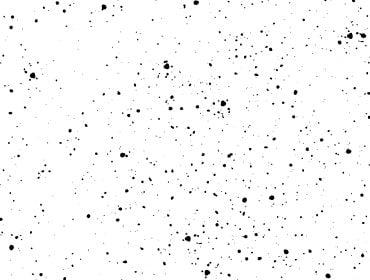Is Balanitis an STD?
Balanitis is an inflammation of the skin at the end of the penis, where it’s attached to the foreskin. It can be uncomfortable and can make urination difficult, but it’s not harmful.
Balanitis happens to some boys and men mostly because of poor hygiene or they haven’t gone through circumcision. The extra foreskin is a breeding ground for infection if not properly cleansed. If a boy doesn’t wash his penis regularly, this can cause a buildup of smegma, or skin oils, which can lead to balanitis.
Balanitis also can happen if a boy has repeated contact with an irritant such as soap, shampoo or lotion on his penis. Other infections also could make balanitis more likely: these include yeast infections or sexually transmitted infections (like chlamydia).
How common is balanitis?
Balanitis is pretty common in boys who haven’t been circumcised—but it can also happen to adult men. It’s not dangerous, but it can be uncomfortable. The rash tends to go away on its own, but if you notice any changes or symptoms of balanitis, see your doctor right away.
Balanitis STI
Smegma is a buildup of skin oils that can develop under the foreskin of uncircumcised boys and men. Balanitis happens to some boys mostly because their foreskins haven’t detached from the head of their penises yet.
In adults and teenagers who have circumcised penises, there are different causes for balanitis including:
- Fungal infections
- Bacterial infections (staph)
- Herpes simplex virus type 2 (HSV-2), also known as genital herpes
Having an STD already can make you more susceptible to balanitis.
Balanitis and irritants, such as soap.
If you have a boy, make sure to wash his penis regularly. If he is using soap, make sure it is a mild one. If he is using shampoo, make sure it is a mild one. And if he’s using lotion on his penis afterward—which can be helpful for skin irritation—make sure you get one that doesn’t contain fragrance or alcohol (both of which can cause problems).
It’s also important not to use soap in the diaper area on infants and toddlers because they may absorb too much of the substance into their bodies and become dehydrated or irritated by it.

Is Balanitis a sign of an STD?
Having balanitis can sometimes mean you have an STD that is causing an overgrowth of yeast or bad bacteria. Here are some things to look out for if you think you have balanitis:
- Yeast infections. Balanitis can also be caused by a yeast infection. Yeast infections are more common in women than men, but they’re not exclusive to either gender.
- Chlamydia and gonorrhea. These two sexually transmitted infections (STIs) are very common and cause inflammation of the genitals, which can lead to balanitis in both men and women.
- Genital herpes. This is another STD that causes painful sores around the genitals, which could lead to balanitis—especially if you have multiple outbreaks of herpes blisters on or around your penis or scrotum, as well as during sex with someone else who has an active infection there as well—but it’s usually less likely to cause problems than chlamydia or gonorrhea because most people don’t know they have genital herpes until they develop symptoms of an outbreak (and those symptoms aren’t always present).
What STD causes balanitis?
Balanitis is not an STD itself, but getting an STD can cause it. Some STDs that affect men include chlamydia, gonorrhea and genital herpes.
A person can get an STD through sexual intercourse, anal or oral sex. It’s possible to get an STD even if your partner doesn’t have symptoms of the infection and you don’t see any sores or blisters on their penis or vagina (vulva).
Balanitis and Posthitis
In some cases, people confuse balanitis with another condition called posthitis, where only the foreskin gets inflamed. You might have both conditions at once — in fact, most boys who have balanitis also have posthitis.
Posthitis can be caused by an infection or irritation. While balanitis usually causes redness and swelling of the foreskin and skin around it, posthitis usually affects only part of the foreskin’s outer layer of skin and does not affect other areas around your penis.
Cleanliness and Balanitis
Balanitis is a buildup of oils and dead skin cells under the foreskin. It can be caused by bacteria, smegma (a mixture of dead skin cells and oil), yeast infection, STD or friction.
What’s the best way to prevent balanitis?
The easiest way to prevent balanitis is to wash your penis every day with soap and warm water. If you’re uncircumcised, pull back your foreskin while you’re in the shower or bathtub so that all parts of your penis are washed gently with plaBalanitisin soap—but don’t use bubble bath because it can irritate sensitive areas like under an uncircumcised foreskin. Don’t scrub too hard or use harsh soaps that may dry out nearby skin; just let warm water flow over the area for a few minutes at least once each day.

Balanitis STI
So, balanitis can be uncomfortable. But it’s not dangerous, and it’s something most boys will get over on their own in a few days or weeks. If you have any questions about your symptoms or treatment options, talk to your doctor. If you are concerned you may have an STD, which could lead to balanitis, then get tested immediately.
Medically Reviewed by J. Frank Martin JR., MD on November 4, 2022
Secure and Confidential
STD testing services
The fastest results possbile - available in 1 to 2 days

Tagged
Categorized As
Author: Esther Jordan
Esther Jordan has been a writer ever since she can remember. She has always loved the free gift of self-expression through journaling, creating stories, and sharing life experiences in front of audiences. Public speaking and creating content has been a strong suit of hers since high school. Immediately after college, she received a paid position as an search engine optimization (SEO) writer in 2010 when SEO was still a very brick and mortar concept for a lot of small businesses. It was a time of do-it-yourself websites and online magic that everyone wanted and either referred to it as SEO or pay-per-click (PPC).




